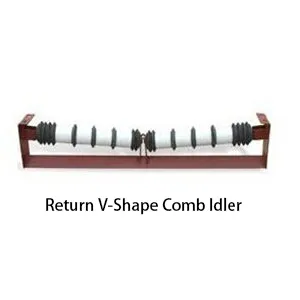 Afrikaans
Afrikaans  Albanian
Albanian  Amharic
Amharic  Arabic
Arabic  Armenian
Armenian  Azerbaijani
Azerbaijani  Basque
Basque  Belarusian
Belarusian  Bengali
Bengali  Bosnian
Bosnian  Bulgarian
Bulgarian  Catalan
Catalan  Cebuano
Cebuano  Corsican
Corsican  Croatian
Croatian  Czech
Czech  Danish
Danish  Dutch
Dutch  English
English  Esperanto
Esperanto  Estonian
Estonian  Finnish
Finnish  French
French  Frisian
Frisian  Galician
Galician  Georgian
Georgian  German
German  Greek
Greek  Gujarati
Gujarati  Haitian Creole
Haitian Creole  hausa
hausa  hawaiian
hawaiian  Hebrew
Hebrew  Hindi
Hindi  Miao
Miao  Hungarian
Hungarian  Icelandic
Icelandic  igbo
igbo  Indonesian
Indonesian  irish
irish  Italian
Italian  Japanese
Japanese  Javanese
Javanese  Kannada
Kannada  kazakh
kazakh  Khmer
Khmer  Rwandese
Rwandese  Korean
Korean  Kurdish
Kurdish  Kyrgyz
Kyrgyz  Lao
Lao  Latin
Latin  Latvian
Latvian  Lithuanian
Lithuanian  Luxembourgish
Luxembourgish  Macedonian
Macedonian  Malgashi
Malgashi  Malay
Malay  Malayalam
Malayalam  Maltese
Maltese  Maori
Maori  Marathi
Marathi  Mongolian
Mongolian  Myanmar
Myanmar  Nepali
Nepali  Norwegian
Norwegian  Norwegian
Norwegian  Occitan
Occitan  Pashto
Pashto  Persian
Persian  Polish
Polish  Portuguese
Portuguese  Punjabi
Punjabi  Romanian
Romanian  Russian
Russian  Samoan
Samoan  Scottish Gaelic
Scottish Gaelic  Serbian
Serbian  Sesotho
Sesotho  Shona
Shona  Sindhi
Sindhi  Sinhala
Sinhala  Slovak
Slovak  Slovenian
Slovenian  Somali
Somali  Spanish
Spanish  Sundanese
Sundanese  Swahili
Swahili  Swedish
Swedish  Tagalog
Tagalog  Tajik
Tajik  Tamil
Tamil  Tatar
Tatar  Telugu
Telugu  Thai
Thai  Turkish
Turkish  Turkmen
Turkmen  Ukrainian
Ukrainian  Urdu
Urdu  Uighur
Uighur  Uzbek
Uzbek  Vietnamese
Vietnamese  Welsh
Welsh  Bantu
Bantu  Yiddish
Yiddish  Yoruba
Yoruba  Zulu
Zulu Innovative Solutions for Optimal Belt Guide Roller Performance and Efficiency
Understanding Belt Guide Rollers Essential Components for Efficient Conveyor Systems
Belt guide rollers are critical components in various industrial applications, especially in conveyor systems. These rollers help in the proper alignment and movement of the conveyor belts, ensuring efficient material handling processes in manufacturing, mining, and distribution sectors. In this article, we will explore the importance of belt guide rollers, their types, functions, and maintenance practices.
What are Belt Guide Rollers?
Belt guide rollers are cylindrical devices that help maintain the trajectory of conveyor belts. They are strategically positioned along the sides of conveyor systems to prevent the belt from drifting or misaligning during operation. By ensuring that the belt remains centered and follows a designated path, these rollers play a vital role in minimizing wear and tear on both the belt and the associated components.
Types of Belt Guide Rollers
Belt guide rollers come in various designs and materials, each suited for specific applications
1. Fixed Guide Rollers These rollers are stationary and provide a rigid support structure for the conveyor belt. They are commonly used in straight conveyor lines where the belt does not require frequent adjustments.
2. Adjustable Guide Rollers Unlike fixed rollers, adjustable guide rollers can be repositioned to accommodate changes in the belt’s alignment. This feature is particularly useful in environments where the load can vary, requiring dynamic adjustments.
3. Tapered Rollers These rollers have a conical shape that helps in guiding the belt effectively, especially in curved sections of a conveyor. Their design allows for smooth movement of the belt, preventing slippage and misalignment.
4. Polymer or Composite Rollers Made from advanced materials, these rollers are lightweight and resistant to corrosion and abrasion, making them suitable for harsh environments, such as those found in mining or chemical processing.
Importance of Belt Guide Rollers
belt guide rollers

The primary function of belt guide rollers is to ensure smooth and efficient movement of conveyor belts
. Properly positioned and functioning guide rollers can lead to a multitude of benefits, including- Reduced Downtime By preventing misalignment and drift, guide rollers help maintain consistent belt performance, reducing the likelihood of disruptions caused by belt tracking issues. - Extended Equipment Life Misalignment can cause excessive wear on both the conveyor belt and the rollers. By keeping the belt aligned, guide rollers contribute to longer equipment life and lower maintenance costs.
- Improved Efficiency Well-maintained guide rollers result in smoother belt movement, translating to increased throughput and enhanced overall productivity in material handling operations.
Maintenance Practices
To maximize the performance and longevity of belt guide rollers, regular maintenance is essential. Here are some best practices
1. Routine Inspection Regular checks for wear and tear, misalignment, or damage are crucial. Early detection can prevent more significant issues from developing.
2. Cleaning Dust, debris, and accumulated materials can affect the performance of guide rollers. Keep them clean to ensure optimal operation.
3. Lubrication Many guide rollers require lubrication to function effectively. Follow manufacturer recommendations for the appropriate type and frequency of lubrication.
4. Replacement If a roller shows significant wear or damage, it should be replaced promptly to maintain system efficiency.
Conclusion
Belt guide rollers may appear to be simple components, but they are vital for the smooth operation of conveyor systems. By understanding their importance, types, and maintenance practices, industries can optimize their material handling processes, reduce operational costs, and enhance overall efficiency. Investing in high-quality belt guide rollers and committing to regular maintenance will ensure the longevity and reliability of conveyor systems, ultimately contributing to a more productive work environment.
-
Revolutionizing Conveyor Reliability with Advanced Rubber Lagging PulleysNewsJul.22,2025
-
Powering Precision and Durability with Expert Manufacturers of Conveyor ComponentsNewsJul.22,2025
-
Optimizing Conveyor Systems with Advanced Conveyor AccessoriesNewsJul.22,2025
-
Maximize Conveyor Efficiency with Quality Conveyor Idler PulleysNewsJul.22,2025
-
Future-Proof Your Conveyor System with High-Performance Polyurethane RollerNewsJul.22,2025
-
Driving Efficiency Forward with Quality Idlers and RollersNewsJul.22,2025





























